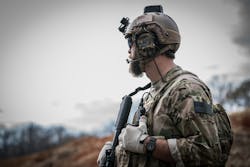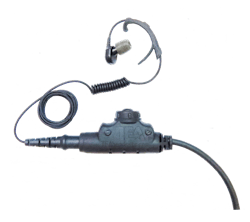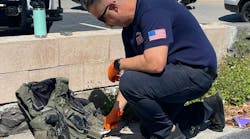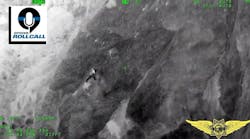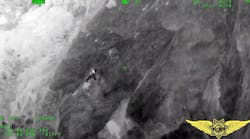From pre-planning to after-action reporting, SWAT officers rely on communication for safety and effectiveness. Although the tactical actions they perform remain relatively static, high-risk and volatile, changes in technology continue to make it easier to get the job done. Companies with backgrounds in law enforcement, search and rescue and military operations are designing products with the communication needs of SWAT in mind. From small enough to fit in your ear to mammoths on wheels, all forms of communication and its integration, analysis and storage are more accessible than ever.
The foundation of tactical operations
TEA has a long history in tactical communication. In fact, the company designed and developed LASH, the first tactical throat mic system for LAPD SWAT in theFor today’s SWAT, he states there is a big trend towards headsets that offer hearing protection while at the same time allowing for acute hearing. “SWAT not only wants the hearing protection when doing forced entry, but they want to be able to hear their surroundings,” says Norment. “We do a lot with HTH (Hi-Threat) headsets. A lot of teams are wanting that high noise ear protection and ambient noise amplification so it gets them the best of both worlds.”
TEA also recognizes the different needs of smaller departments. “Normally, a lot of SWAT teams are multi-jurisdictional, so you have a few different departments joining together,” Norment explains. “They might be doing regular patrol and have a tactical vest in the trunk. They get a call and switch over to a tactical scenario.” TEA’s Incident Command Professional In-Ear Headset meets the need of a low cost, semi-covert solution. “It’s a simple single ear headset used in conjunction with push-to-talk,” says Norment. “They can go from using that set up for patrol then switch over to a tactical environment. It’s a little more cost effective. They don’t have to have two separate systems.” Although maybe not the most glamorous piece of SWAT communication gear, the ability to talk and hear is the foundation of tactical operations.
Software that connects jurisdictions
Blueforce Development Corporation also recognized the unique needs of tactical operations in smaller jurisdictions where they often have mutual aid rather than their own SWAT team. When an incident occurs, a variety of officers from different departments deploy. As a result of this, they created Blueforce Tactical (BTAC) to bring all these individual officers into a team. BTAC is a secure mobile software application connecting team members through the devices they already carry into the tactical environment, including Android and iOS smartphones and tablets. The system allows information sharing beyond text and calls, extending to geo-location, floor plans, environmental sensors and biometrics. Labeled “small unit swarming,” the application allows full integration of communication on a plugin architecture. Blueforce enables rapid establishment and breakdown of secure human, sensor and information networks. “It allows the incident commander (IC) to quickly see what resources are going to get to him or her first and total situational awareness,” explains Michael Helfrich, founder and CEO. ICs can determine how far out team members are, such as tactical medics or bomb techs, as well as keep an eye on the resources deployed on scene especially with mutual aid where the IC may not know each person individually. “It gives full awareness,” says Helfrich. “It’s not a value for big cities, but it is for the majority of communities that rely on each other.”
BTAC not only integrates information about the people, sensors and systems—they take it one step further. “Data integration is really important,” Helfrich explains. “Not just taking the data off one sensor, but taking multiple sensors and making sense of them. We allow sensors to talk to each other.” He gives the example of one sensor showing an officer’s heart rate dropping to zero, but at the same time the gyroscope shows his phone is still moving. Taken together, this scenario goes from officer down to not concerning. “Using more than one sensor bouncing off the officer or the environment allows for better decisions,” Helfrich says. “SWAT’s primary job is to have eyes on the target, not to look at sensors.” Data integration is important for SWAT safety, but also for evidentiary full chain of custody. “We move beyond radio traffic and human traffic to silicon which is hard to argue,” he explains. Data integration also allows for storage and playback both during the incident and for training afterwards. “From a planning perspective, we view every person, every K-9, every sensor and every service, whether in a cloud or on the back of a command vehicle as a subscribable interface,” says Helfrich.
Eye in the sky to wheels on the ground
SWAT men and women love their gadgets and when it comes to technology that improves communication, FLYMOTION delivers on this need from unmanned aircraft systems (UAS) to command vehicles that collect, integrate and house communication data. “This really provides a tool for situational awareness, which is critical,” says Ryan English, FLYMOTION co-founder and CEO about the use of UAS in SWAT operations. “To have that eye in the sky and that forward observation prior to getting there.”
Along with UAS, FLYMOTION offers several options for the command vehicle or trailer used to bring all that communication together. “We started introducing the command vehicle to provide the control side of the data, video and telemetry,” says English. “The purpose of the command vehicle is really to have a designated platform for all the data, all the video, everything to come back to one central hub to make all our critical decisions and allow the IC to be there in real-time to act. It allows us to not only have it coming in through LTE and satellite, but we can send it out elsewhere as well, to other commands and fusion centers. We can take that information and get it out in real-time to them.” Command vehicles house all kinds of systems, including network, communication equipment, LTE and high-definition video transmission, explains English. On the networking side, the vehicle can work with multiple carriers, from LTE to Wi-Fi connecting up to 120 users. “The big thing is it provides a climate-controlled environment to run the operation from rather than just having a guy standing out there and 10 people standing behind him looking at an eight-inch screen,” explains English “That still happens but there are much more efficient ways to run operations.”
Another communication element offered in this set-up is the interactive smart board. “Different agencies overlay their operations plan,” says English. “Then the IC or SWAT team leaders can write interactively on there.” For example, they can write that entry will be made on the Alpha side with a secondary breach on the Charlie side. “We can digitally send that out to everybody’s mobile devices so everyone has a clear view of what it’s going to look like,” he explains.
In the past, many things were segmented. The FLYMOTION systems bring together all the sensor data and communication in one comfortable, easily accessible space. This also allows for assessment and training after the situation is over. “Everything is recorded so everything can be played back,” English states. “Even during, it can be played back. All the sensor data is recorded so all those things can be put into the after-action report.”
English also mentions the importance of blue force tracking as part of SWAT communications. Blue force tracking offers GPS sensors and a software package typically including a mapping application. “We’re not only talking the drone piece, but infusing that into blue force tracking,” says English. “The days of getting on the radio and doing a roll call to see where every guy is at are over. Through technology there are ways to eliminate that.”
The future of SWAT comms
“What we’re starting to see in the larger cities is the tacit recognition that we can turn every officer into a sensor platform with our technology,” says Helfrich. He explains how more than 2,000 patrol officers in a large eastern city of the U.S. are being outfitted with environmental sensors. “Outfitting officers, as a by-product of their primary mission, they are a sensor platform,” he explains. “We’re going to see some of the SWAT stuff trickle down to do a force multiplier. We are seeing it already.” Helfrich feels a lot of the integration from tactical to patrol is due to officers accepting mobile edge computing. “They are starting to see the smartphone as a computer with communications with hybrid cloud access,” he says.
Even as SWAT communications and their data integrations products become more mainstream, companies will continue to innovate and expand on the options available for these special operations.
About the Author
Michelle Perin has been a freelance writer since 2000. In Dec. 2010, she earned her Master’s degree in Criminology and Criminal Justice from Indiana State University.
